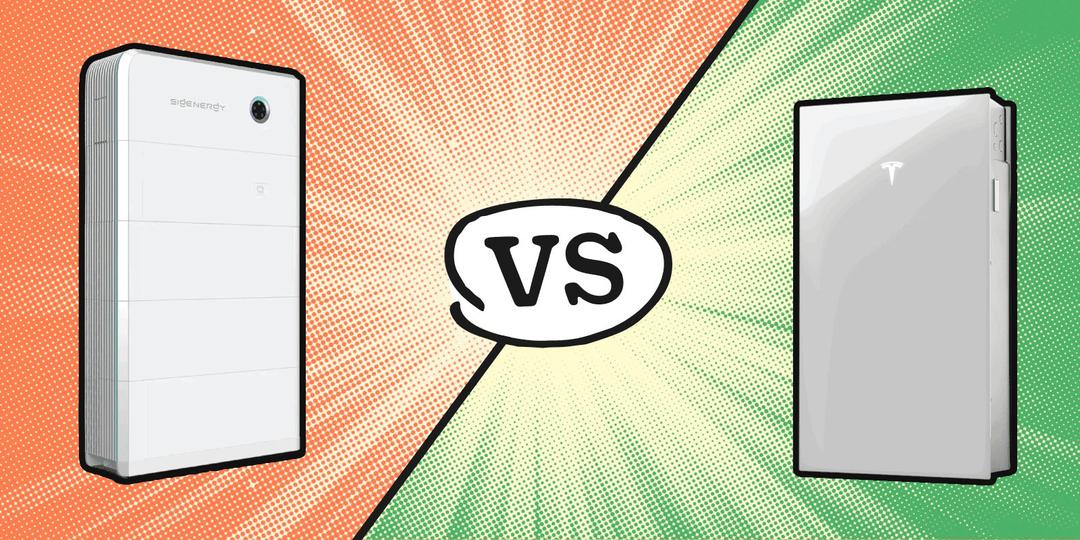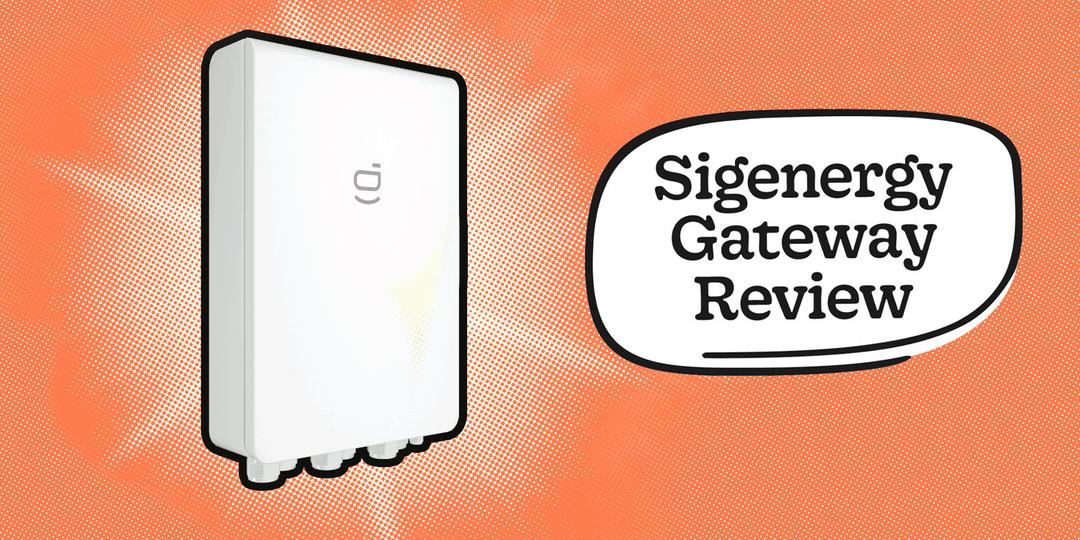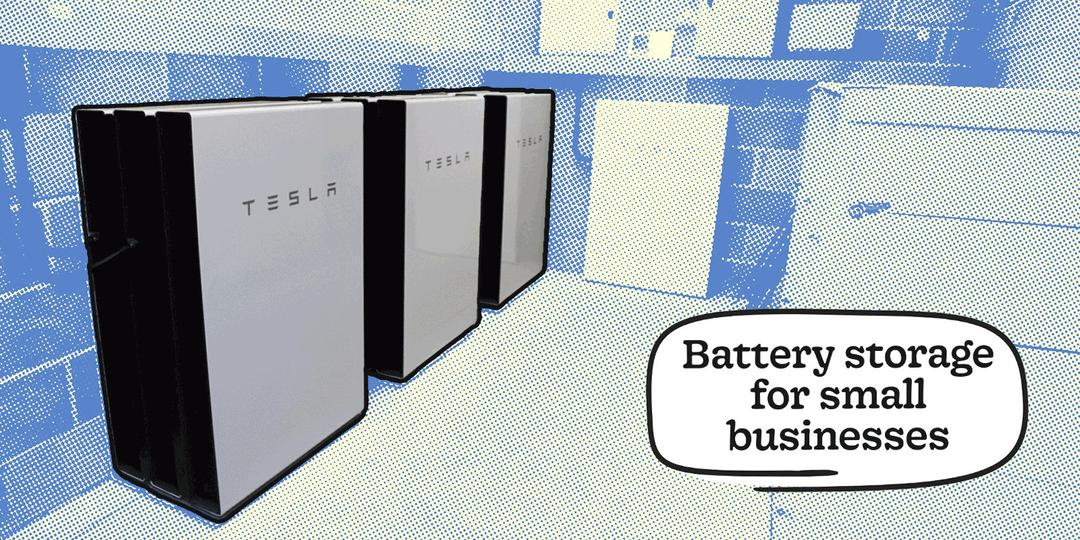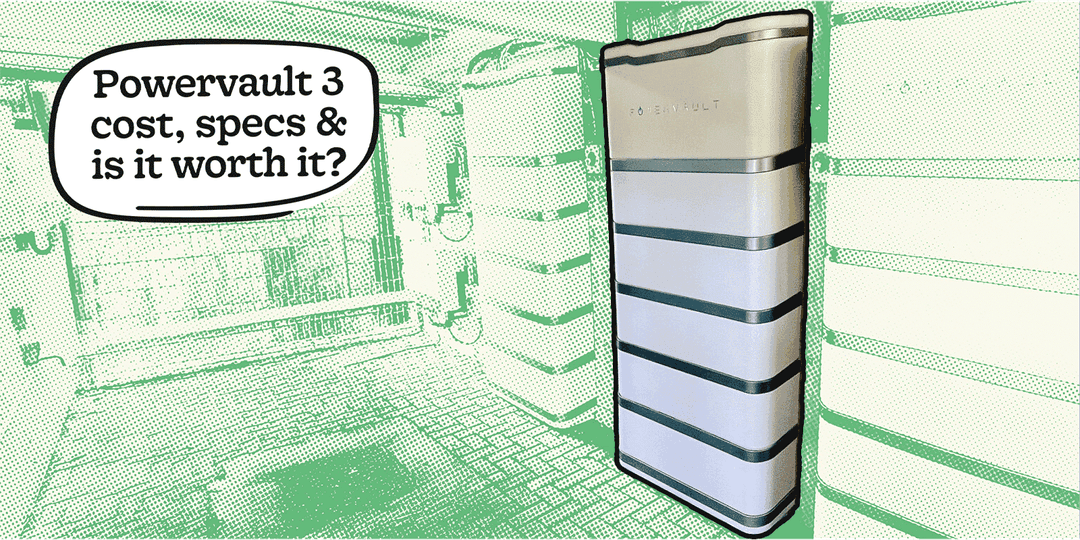Explore alternative storage batteries to the Tesla Powerwall, including like-for-like models, why you might want to consider alternatives, and what you can expect to pay for alternatives.
Whether you have solar panels or just want to store off-peak electricity, it’s well worth thinking about installing battery storage.
With a solar battery, you’ll be able to use more of the electricity your solar panels generate, meaning you’ll save even more on your energy bills.
Most people aren’t at home all day, so a good chunk of the electricity your solar panels generate goes to waste. A storage battery mitigates this, allowing you to use solar energy at night.
One of the most popular storage batteries is the Tesla Powerwall, but because of high demand, one might not always be available. We’re exploring Powerwall alternatives here, though just because they’re alternatives, it doesn’t mean they’re guaranteed to be worse than a Tesla Powerwall.
Still, we’ll compare our picks to the Powerwall 3, the latest (and in our opinion greatest) battery from Tesla. We’ll look at their strengths, weaknesses, and include information on what you might spend and whether you can get them installed through Heatable.
Key Points
Top alternative brands to Tesla include LG Chem, Sonnen, AlphaESS, and Enphase.
Storage battery capacity ranges from 4 to 36 kilowatt hours (kWH).
The bigger a battery’s capacity, the more electricity it can store.
The Tesla Powerwall 3 costs £7,995 through Heatable.
Psst… we offer MCS-certified battery installation across the UK. Simply answer these questions, get your fixed price, and arrange your free design.
The Tesla Powerwall 3
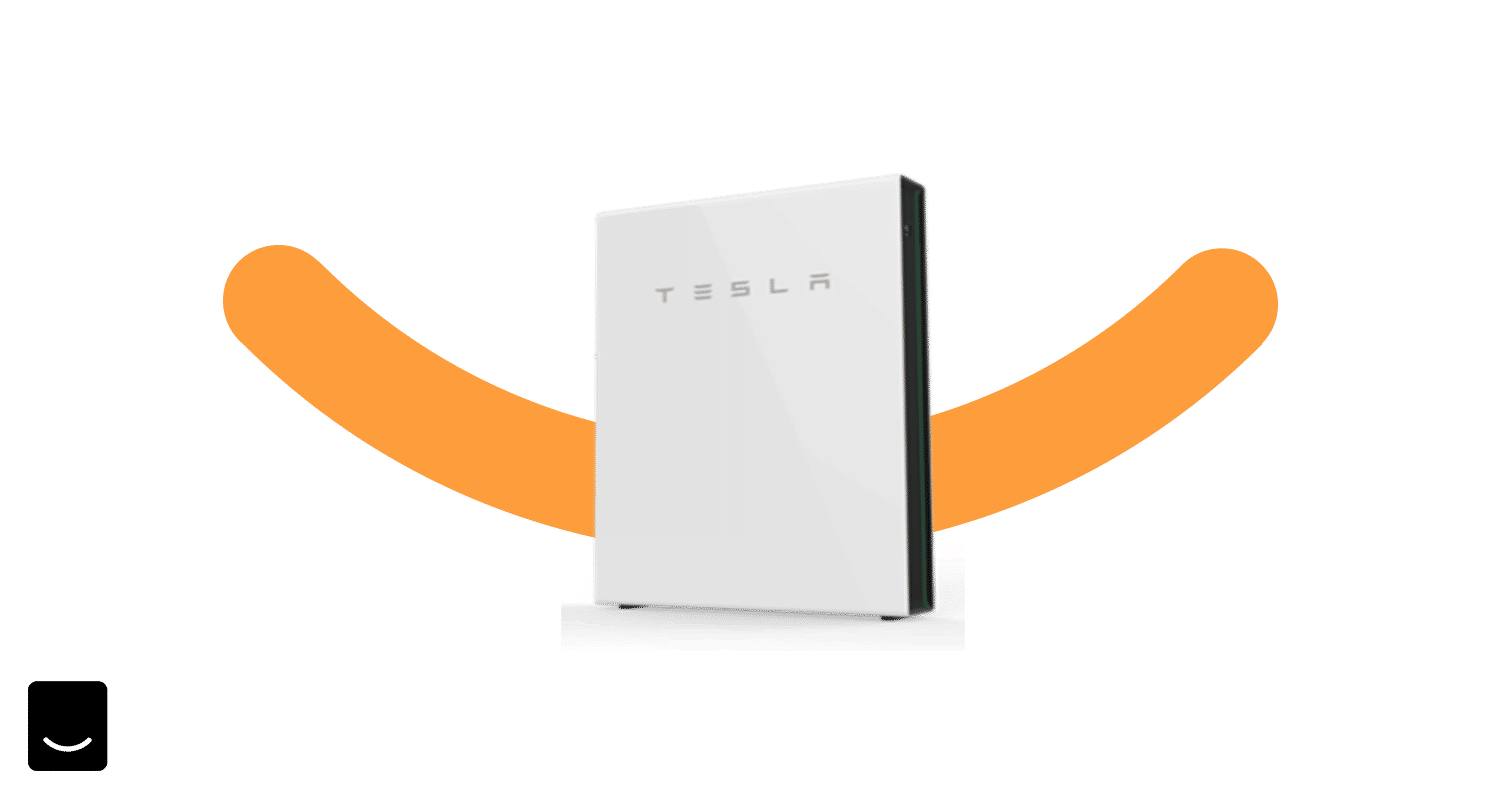
Key stats:
Storage capacity – 13.5 kWh
Usable capacity - 13.5 kWh
Depth of discharge – 100%
Max power output – 11.1 kWh
Warranty – 10 years
Reliability rating – 10/10
Before we get cracking with the alternatives, we’ll give a quick overview of the Tesla Powerwall 3 in case you’re not yet familiar with it.
The Powerwall 3 is one of the UK’s most popular storage batteries and for good reason — its huge usable capacity means you can get a lot of usage out of it before needing to charge it again.
Of course, your mileage depends on how many electrical appliances you need to run, but if you do have high electrical demand, the Powerwall 3 has you covered too. Its max power output of 11.5 kW means you can run a whole bunch of appliances at the same time.
Perhaps the greatest feature of the Powerwall 3 is the Tesla Gateway, which means that if your home experiences a power cut, your Powerwall 3 will immediately kick in, keeping everything running with a moment’s interruption.
The Powerwall 3 is, in nearly every way, an improvement over the (still excellent) Powerwall 2 (check out our review of the Powerwall 2).
The Tesla Powerwall 3 costs £7,995 (including installation) when purchased through Heatable. We’re certified Powerwall 3 installers too, so you can rest assured that when you install through us, you’re getting genuine Powerwall 3 experts.
Check out our Tesla Powerwall 3 installation from start to finish in our YouTube video below:
Enphase IQ Solar Battery 5P
Key stats:
Storage capacity — 5 kWh each
Rated output power — 3200va (3.2 kWh), doubling every time you add an additional unit
Inverter efficiency — 97%
DNO compliance — approved for G98, G99 & G100 (with Envoy)
Backed by a 15-year product warranty
Depth of discharge — 100%
Reliability — 9/10
Enphase, like Tesla, is an American company with a reputation for making incredible batteries. It’s also the world’s biggest producer of microinverters, so Enphase knows a thing or two about making batteries that world well with solar panels. There’s a reason we install all of our solar panels with Enphase IQ8 inverters.
So it’s no surprise that the Enphase IQ Solar Battery 5P is right up there on our list of Tesla Powerwall alternatives.
For starters, it’s the only battery offering a 15-year warranty (that we’re aware of, at least), which is a frankly bonkers length for a warranty and proof Enphase trusts its own technology immensely.
And the Enphase IQ Solar Battery 5P has got a high power output of 7.68 kW, meaning you won’t struggle to keep appliances running when you’re solely using battery power. Especially if you combine batteries in a modular system — these units are actually designed to be stacked, so you can get the battery capacity that’s just right for your home.
The Enphase IQ Battery 5P is an AC-coupled battery too, which makes it the ideal retrofit solution for an existing PV system with no battery storage. It’s great if you’re looking to use the unit to charge on a low-rate off-peak tariff.
If space is an issue, then you’ll be happy to learn the Enphase IQ Battery 5P is a little smaller than the Powerwall 3.
Where this battery doesn’t compare quite so favourably to the Powerwall 3 is in its cost. You’ll pay roughly 20% more per kWh for the Enphase IQ Battery 5P compared to Tesla’s offering, but you do get that incredible 15-year warranty.
Additionally, UK models don’t come with backup power supply functionality, so if the power does cut out, your Enphase IQ Battery 5P won’t keep the lights on.
Standalone cost (without installation) — £3,100 (5KWh IQ Battery 5P)
Installation cost — £1,000–£1,500
Additional 5 kWh units — £2800
AlphaESS Smile G3 Plus Battery

Key stats:
Storage capacity — Starter units: 3.8KWh and 10.01KWh, expandable up to 60.6KWh
Usable capacity — 3.61KWh per 3.8KWh module & 9.59KWh per 10.1KWh module
Depth of discharge — 95%
Max power output (charge and discharge) — 3860w (3.68 kW) & 5000w (5 kW)
Warranty — 10-year warranty
Reliability rating — 9/10
AlphaESS is another big player in the battery storage market, with thousands of installations worldwide and a range of some of the best batteries we’ve ever seen.
Particularly good is the AlphaESS Smile G3 Plus Battery, which is a stackable battery perfect for people looking to start small and increase battery capacity further down the line. It’s also a battery filled with great technology, which you can access via the Alpha App.
Using this app, you can easily see the real-time PV production of your solar panels, home energy consumption, the charge or discharge rate of the battery, and battery capacity status.
You can also set the battery to a low-rate charging profile for multiple periods, helping you to make maximum savings and prevent energy waste. And, you can programme the battery to export to the grid (via the Smart Export Guarantee) any excess electricity you don’t need.
The AlphaESS Smile G3 Plus Battery is good for 10,000 cycles (going from a full charge to empty equals one cycle), so this is a very durable battery that can comfortably charge and discharge again and again.
What we didn’t like in comparison to the Tesla Powerwall 3 was the max power output. At 5 kW, it’s not bad by any stretch of the imagination, but as a like-for-like comparison, the AlphaESS Smile G3 Plus Battery won’t be able to power as many appliances as the Powerwall 3.
Standalone cost (without installation) — £3,250 for the Smile G3 3.8KWh and around £5,350 for the 10.01kwh unit
Installation cost — £500–£1,500
Powervault P4 Solar Battery
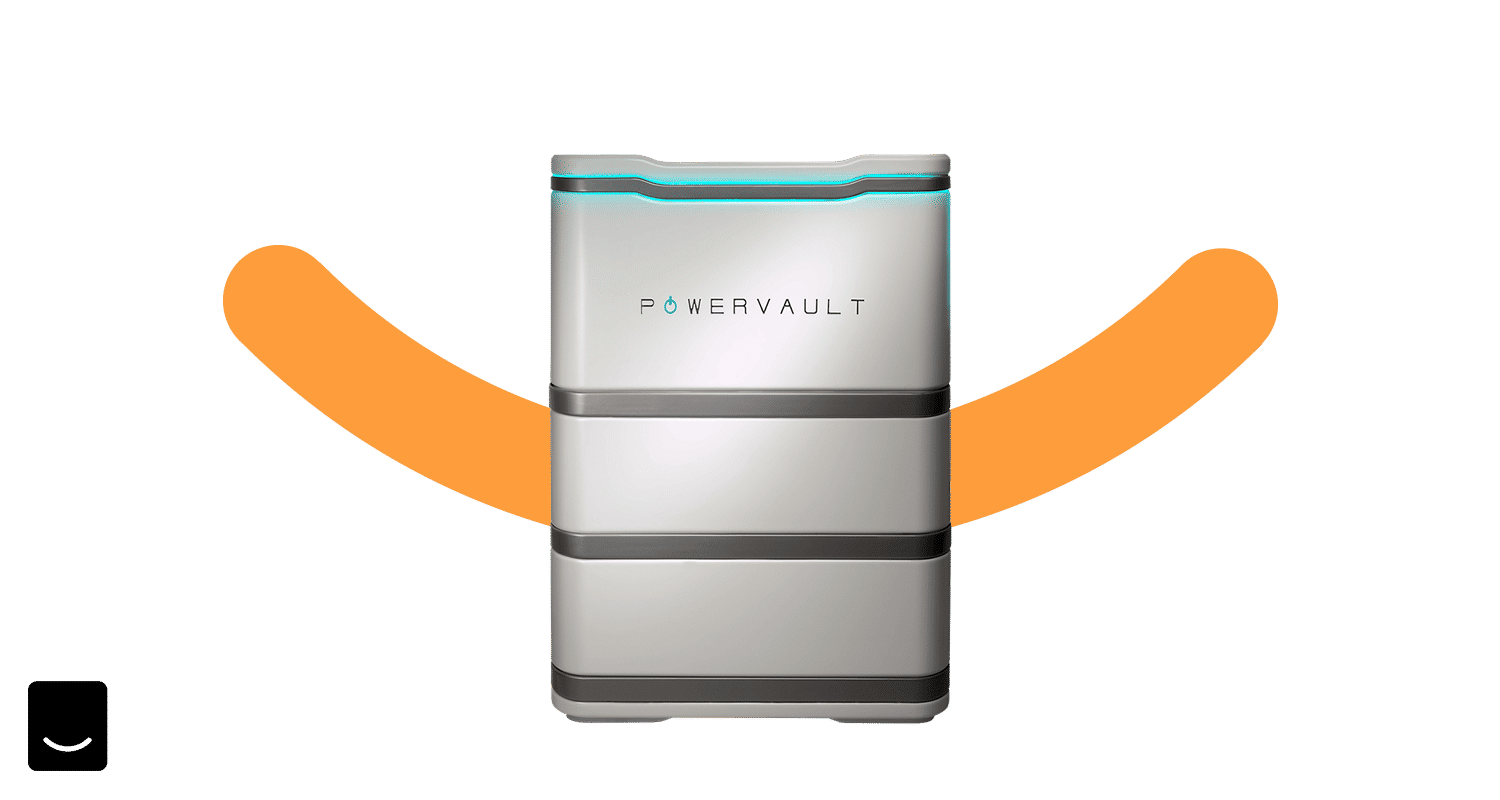
Key stats:
Storage capacity — 8, 12, 16, 20, 24 kWh
Usable capacity — 8, 12, 16, 20, 24 kWh
Depth of discharge — 100%
Max power output — 4.8 kW
Off-Grid home backup — with optional Emergency Protection Sockets
Warranty — 10 years
Reliability rating — 8/10
Powervault is the first UK-based battery storage manufacturer on this list, and its Powervault P4 is a real powerhouse in the storage market (pun intended).
This is a battery designed for excellent scalability (like the AlphaESS Smile G3 Plus Battery), so if you’re unsure of how much usage you’ll get out of a storage system, you can start off with the 8 kWh model. It’s easy to add new batteries until you reach 24 kWh, which’ll be more than enough for most households.
The Powervault P4 has a big brain behind it too — the smartSTOR™ capacity management system is fully capable of picking the optimal time to store grid electricity when it’s at its cheapest, or renewable energy when weather conditions are optimal. Pretty smart eh?
With the smartSTOR™ capacity management system, you’ll save even more money with the Powervault P4 than you would with some other models.
Compared to the Tesla Powerwall 3, the Powervault P4 wins out in terms of scalability, but we were a little disappointed by the fact you can’t install the P4 outside, whereas you can install the Powerwall 3 both inside and outside.
Standalone cost (without installation) — £5,000–£15,000
Installation cost — £1,100–£2,000
Related battery guides:
SonnenBatterie Eco
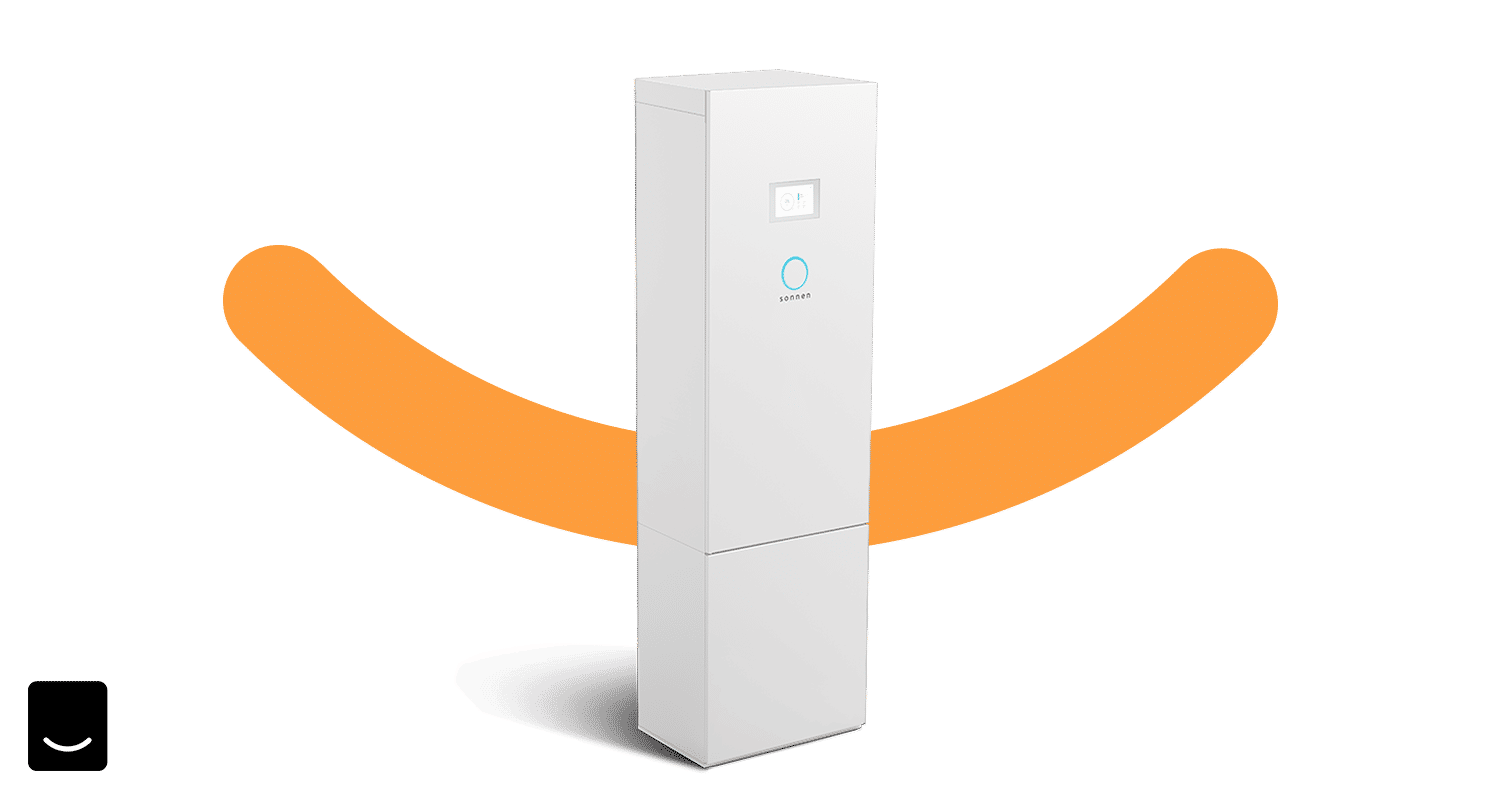
Key stats:
Storage capacity — 2–16kWh
Usable capacity — 90% of storage capacity (i.e., 1.9 kWh to 14.4 kWh)
Depth of discharge — 100%
Max power output — 3.3kW
Hailing from Germany, sonnen has been making waves in the battery storage market by creating some of the most stable models you can buy.
How does it do this? Its batteries predominantly use LFP battery chemistry, which is generally considered more stable than the lithium NMC approach used by Tesla. In layman’s terms, a more stable battery means a battery with a higher life expectancy.
That’s not to say Powerwall 3s don’t last a long time — trust us they do. Nor are Powerwall 3s in any way dangerous, it’s just that the sonnenBatterie Eco goes out of its way to be more stable, by not using heavy materials found in the lithium NMC batteries (making LFP batteries more safer).
The sonnenBatterie Eco has a cheaper starting price than the Powerwall 3, which is great, but where it falters is in its usable capacity of 90%. You get a usable capacity of 100% with the Powerwall 3, which means you can use 100% of the advertised capacity.
Also, the manufacturer's guide says you shouldn't use the sonnenBatterie Eco in temperatures less than 5°C. The UK might not always get that cold, but 5°C is absolutely an annual occurrence across the country. This all but guarantees a point in time each year where a sonnenBatterie Eco owner won’t reliably be able to use their storage battery.
If you plan to use a storage battery to power an electric boiler, then you might want to stick with a Tesla Powerwall 3, which can operate in temperatures as low as -20°C.
Standalone cost (without installation) — from £4,500
Installation cost — £1,100–£2,000
LG Chem 10kWh Prime HV Li Battery
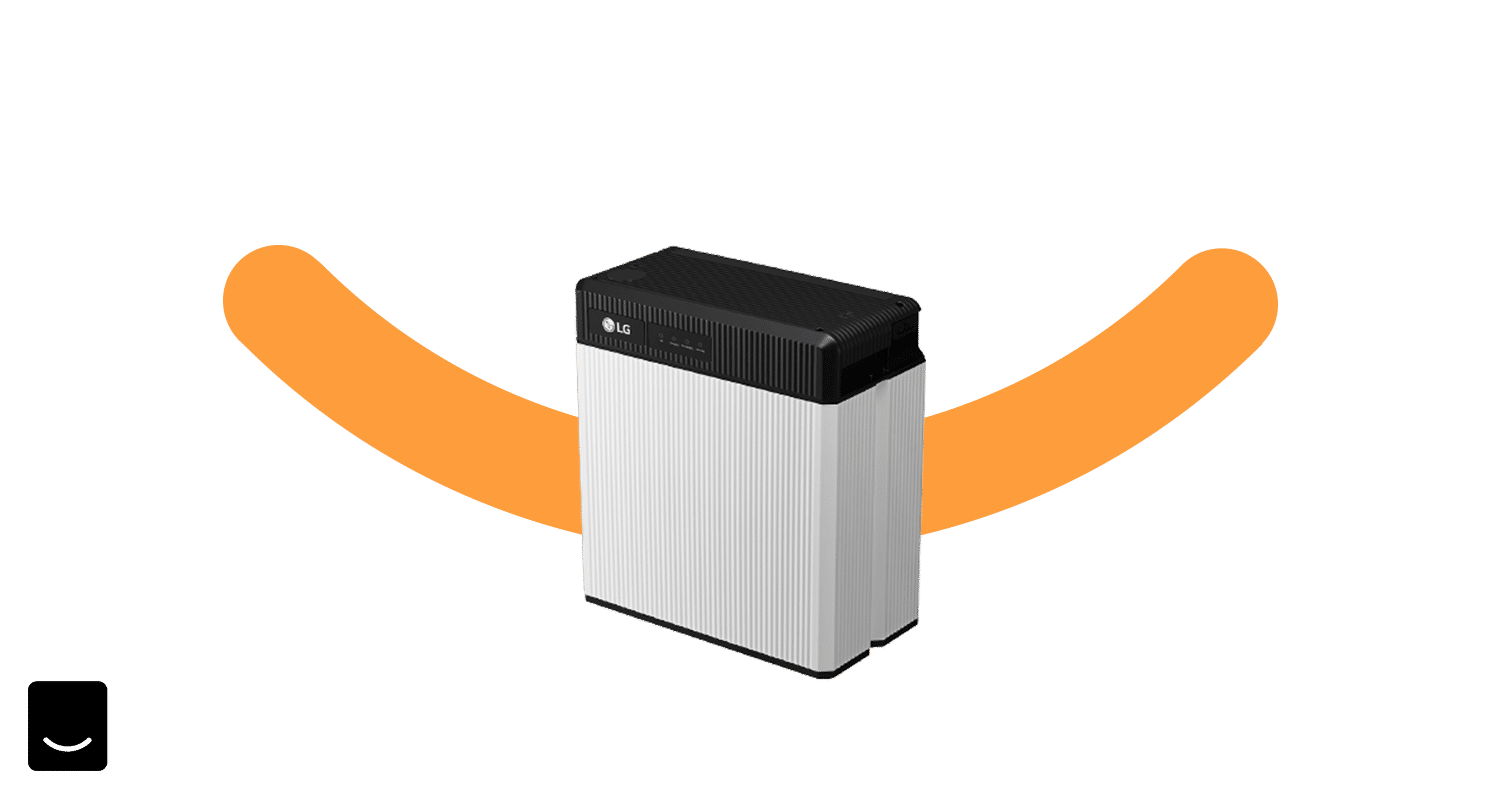
Key stats:
Storage capacity — 9.6 kWh
Usable capacity — 90% of storage capacity
Depth of discharge — 100%
Max power output — 5 kW continuous and 7 kW peak
Perhaps you’re more familiar with South Korean company LG for its televisions, but they also make some excellent batteries too. Do they offer anything comparable to the Tesla Powerwall 3 though?
In our opinion, the closest you’re going to get is the LG Chem 10 kWh Prime HV Li Battery. This is a battery designed for homes with high energy needs and is more than capable of withstanding daily cycles.
Ability to cope with daily cycles are an important part of what makes a storage battery great, because realistically you want a battery that can help reduce your reliance on the grid. Also, LG Chem batteries show just a 16% capacity drop after three years, which is impressive.
However, it’s not quite as impressive as the Powerwall 3’s guarantee of still having 80% capacity after 10 years. The LG Chem 10kWh Prime HV Li Battery is expected to have around 60% of its maximum capacity be usable after 10 years, so the winner in terms of longevity is comfortably the Powerwall 3.
Standalone cost (without installation) — from £6,599
Installation cost — £700–£2,000
Explore a Battery Storage Case Study: Check out an insightful Q&A session featured in one of our detailed case studies on battery storage. Hear directly from a Heatable customer in the UK and gain valuable perspectives on their experience here.
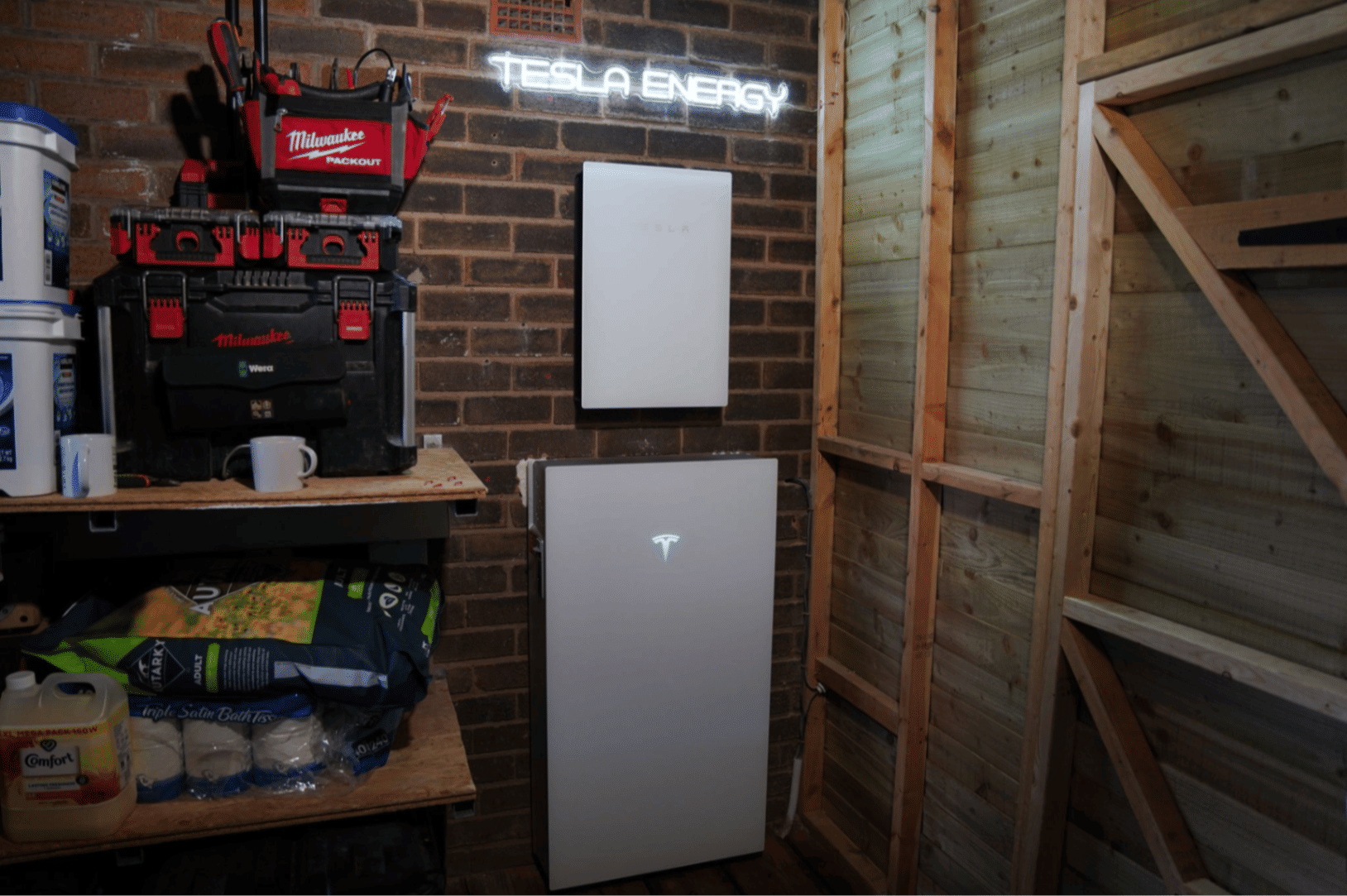
The image above features a Tesla Powerwall 3 installation performed by our team of Tesla-certified installers at Heatable.
What is a solar battery?
Imagine that you’ve made it this far and don’t actually know what we’ve been going on about this whole time — a storage battery? What on Earth is that?
Fret not, here’s a quick rundown:
A storage battery is a means of storing electricity typically from solar panels, which is why they’re also often called solar batteries. You can absolutely use a storage battery to store electricity from the grid though, which can be a smart choice when electricity prices are low during off-peak times.
Storage batteries help you reduce your reliance on the grid, but it can be quite difficult to go completely off-grid with one. You can go off-grid with enough storage batteries and a mix of renewable energy sources (not just solar panels), but the costs for such a system really start to skyrocket.
Speaking of costs, the average price for a storage battery is around £4,500 (not including installation). If you plan to combine it with a solar panel system, the total cost for a system large enough for a typical three-bedroom household will be around £12,000.
Also, keep in mind that most batteries last between 8 and 12 years, so you’ll need to purchase at least two storage batteries within the 25+ year lifespan of a solar panel system.
Here are a few other key benefits of battery storage:
You can use the energy stored in solar batteries to run your home or supplement electricity taken from the national grid at night time or on especially cloudy days.
Stored energy can be very useful during a power outage, again, especially if it happens after dark. Be aware that not all storage batteries have this feature, so check before you purchase and install! Even some models that have this feature require additional equipment to be installed.
It’s possible to use a solar battery to store energy before selling it back to the grid. You’ll need to be sure that the energy provider you have in mind is willing to purchase solar energy that is battery-stored, as some do and others don’t.
Curious about solar? Check out our guides on how many solar panels you need, how solar car charging works, and the largest solar farms in the world.
We’re proud to be Tesla Certified Installers, MCS accredited and Which? Trusted installers with over 10,000 glowing reviews on Trustpilot. Discover why so many trust us for their solar panel & battery storage installations—visit our Reviews and Testimonials page and watch Phil’s video testimonial below.
Next Steps for Your Battery Journey:
When planning to install battery storage for your home, there are several important factors to consider. Make sure to refer to the following guides to help you make informed decisions:
To dive deeper into these topics, head over to our advice section, check out our YouTube channel for informative videos, or read a customer case study to see how others have benefited from their battery installation.
Get a Quote for Battery Storage Today
Not to brag too much about why you should get battery storage installed with us, but here’s a few reasons why:
Thousands of Happy Customers: We boast an average score of 4.8 on Trustpilot, outperforming the market leader.
Which? Trusted Trader: Heatable is proudly recognised as a Which? Trusted Trader.
Tesla Certified Installer: Heatable is proudly certified and approved by Tesla to install the Powerwall.
MCS Accredited: Our accreditation by the Microgeneration Certification Scheme (MCS) ensures high-quality standards.
Consumer Protection: As members of the HIES consumer code, we provide 2-year deposit protection.
Flexible Payment Options: Choose from multiple payment methods, including finance options.
Fixed Price Guarantee: Enjoy transparency with no hidden costs.
Save Your Quote: You can save your quote and decide later.
Bespoke Battery Quote Tool: Find out which battery is ideal for your home, here.



